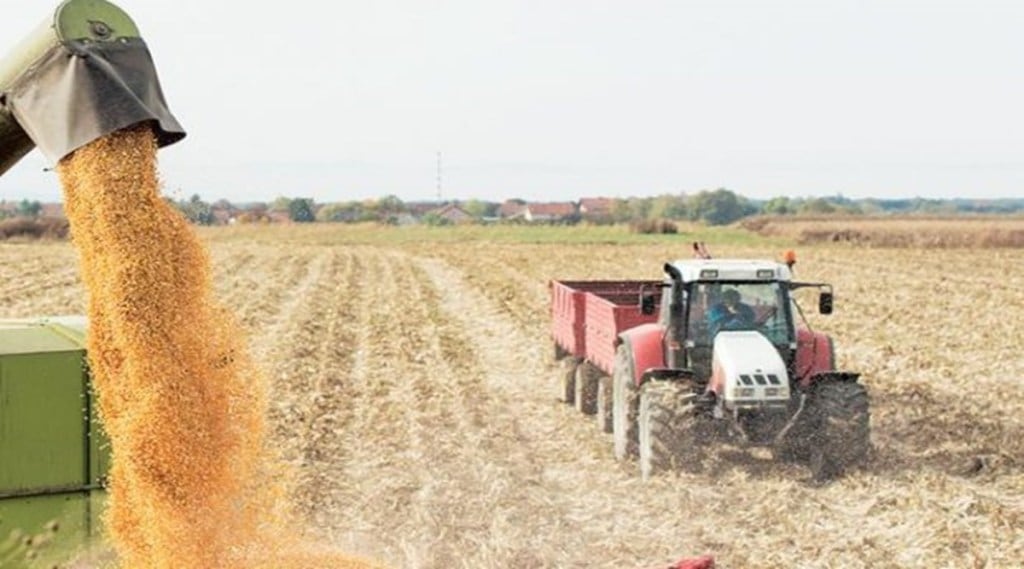By Deepak Gupta & Kolluru Krishan
As per India’s third Biennial Update Report , in 2016, agriculture and livestock emitted 407,821 Gg of CO2e, around 14% of total emissions. Out of this, 61.3% is linked to livestock. The figures for Land use (LULUCF) are net sink of 307,820 Gg CO2e, representing 15% removal from total emissions, primarily from forest and cropland. The significance increases manifold when socio-economic impact is factored. India, with 1.75 million sq km arable land and a 300 million cattle population has 160 million rural households with agriculture being the main source of livelihood. Hence, decarbonisation has to be carefully calibrated to avoid an adverse impact to over 120 million marginal farmers who are still in the ‘survival phase’ of their socio-economic development.
Meanwhile, transition to sustainable and climate-smart agriculture and land use can create many jobs and enhance incomes apart from mitigating GHG emissions and environment pollution. Apart from livestock, the major constituents of agriculture GHG emissions are rice cultivation (17.5%), fertiliser application (19.1%), and field burning of agricultural residues (2.2%).
Deep decarbonising pathways would include reducing biogenic methane from cattle and rice cultivation; inculcating resource efficiency by reducing consumption of irrigation water, chemical fertilisers, and energy for cultivation/ harvesting/transport as well as farm waste processing; reducing waste in the food supply chain; and building climate resilience through deploying automation and technology. The following factors are critical for both decarbonisation and sustainability:
Soil:Fertile soil enhances farm yields and incomes apart from being a carbon sink. Healthy soil holds more moisture and soil conservation methods reduce erosion. The co-products of biogas/biofuels plants are compost/bio-char, which enrich soil, mitigate environment pollution, and displace chemical fertilisers.
Freshwater: Agriculture consumes over 80% of freshwater in India, making conservation critical. Micro-irrigation with automation and adoption of low water-intensive species and farming practices is essential. Areas under water intensive crops must be reduced through crops diversification, examples being oil seeds, pulses, horticulture, and forage crops.
Alternate cropping: This contributes to GHG mitigation and is an emerging area in climate-smart farming. For example, seaweed cultivation as additive to cattle feed reduces biogenic methane emissions, improves feed quality, and enhances milk production.
Agro-forestry: Trees act as windbreaks, reduce soil erosion, enrich soil, and filter water. Studies suggest that 5% increase at 5 yearly intervals to the existing 16 mha area can help mitigate India’s projected emissions.
Bio-energy from farm waste: This offers immense potential for mitigating emissions as well as growth in non-farm economic activity. Manure-based community biogas plants can support clean cooking and distributed power. India’s National Policy for Biofuels/ SATAT scheme set a medium-term target of 15 million tonnes of bio-CNG. IEA’s India Energy Outlook 2021 estimates the potential being of 30 million tonnes Bio-CNG. BECCS (Bio Energy with Carbon Capture & Storage) involves capturing CO2 from bioenergy plants and permanent storage. This will lead to carbon removal as well as negative emissions.
India has many programmes—National Mission on Sustainable Agriculture (NMSA) under the National Action Plan on Climate Change (NAPCC), National Initiative on Climate Resilient Agriculture (NICRA), and National Adaptation Fund for Climate Change (NAFCC). However, outcomes have not been satisfactory. Coordinated and action-oriented implementation and appropriate institutional architecture from the Centre to states to districts or agro-zones is needed. Sustainable agriculture pathways will require significant capital, but a large portion could come from repurposing existing subsidies. Climate finance and patient capital will be needed for areas having longer gestation period, viz biogenic methane mitigation, agro-forestry, etc.
As for land use, the key elements are halting deforestation, rejuvenating degraded forests, and accelerating afforestation. India has been an early mover through its “Greening India Mission” and NDC and aims to create 2.5-3 billion tonnes of carbon sinks by 2030. The total forests carbon stock has been estimated to be 7204 million tonnes. This is inadequate. A two-pronged approach is required—first, to generate high integrity, real-time data on forest status; and second, to undertake conservation, restoration, and regeneration under an integrated forest management framework. This requires funding and mobilising communities and addressing their needs, especially forest fringe villages.
Weather patterns are becoming disruptive. We need to back ambitious targets with a consensual approach and robust implementation. Suitable studies are needed on a dynamic basis. Each action must have a separate micro-plan with actions and timelines. Governance is tricky. Multiplicity of goals—increasing food production, alleviating poverty, and reducing emissions—may cause confusion. We need an optimal and mutually reinforcing overlap of these objectives with minimal negative tradeoffs through reinventing our relationship with land.
Gupta is former secretary, MNRE, and former chairperson, UPSC, and Krishan is chairman, CVC India Infrastructure

